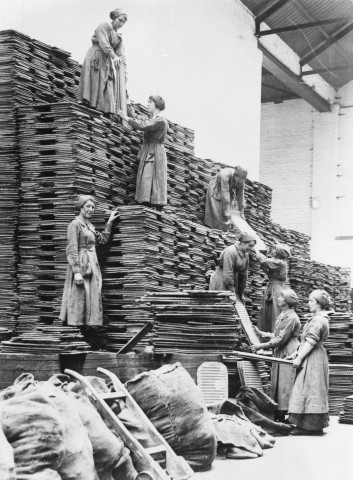POST AND DONATE: BRITISH HEART FOUNDATION LAUNCHES FREE POSTAL DONATION SERVICE
~ Charity retailer calls on the nation to donate pre-loved goods without hitting the high street ~ 
This June the British Heart Foundation (BHF) is launching a new post to donate service, making it even easier for the public to give their decluttered items and support the charity to help save lives.
Throughout June and July the BHF will start to reopen its 750 nationwide shops and stores introducing new measures to keep staff, volunteers and customers safe. As part of these new measures the BHF has launched a postal donation initiative where customers can donate smaller items via post and give to the charity without hitting the shops.
From clothes and books to vintage toys and ornaments, the BHF hopes to receive good quality items that the public have been clearing out while at home. These will be sold either online via the charity’s eBay store or at a BHF shop.
Allison Swaine-Hughes, Retail Director at the British Heart Foundation, said: “Our charity shops run purely on the support of the public, which is why we never take for granted a camera, record or video game that’s donated to us. Every item we sell helps fund our vital research.”
“Our new postal donation service is quick, easy and free. It’s the perfect solution if your local BHF shop is not yet open and you have items you want to give, or you’re simply not ready to head to the high street.
“Every pound raised in our shops helps us to support the 7.4 million people in the UK living with heart and circulatory diseases, many of whom are at increased risk from Covid-19. Your donations can help us help them.”
Customers can simply head to the webpage, request a freepost label which will be emailed to them and then choose to either print the label off or bring the email in to one of 7,500 nationwide Collect+ drop off points to be printed off there. Packages can be up to 10kg.
In line with Government advice and to keep customers safe, all donations given to the BHF will now be rested for 72 hours before being placed onto the shop floor. Customers will also be able to donate at new contact-free donation points which will be set up at every BHF shop entrance. For larger donations to home stores the BHF will be restarting its free collection service once home stores reopen – ensuring all pick-ups are socially distanced.
Donating unwanted items not only helps fund vital heart research but will also reduce waste and save items from landfill. Last year alone, the BHF saved an incredible 71,000 tonnes of items from landfill and 135,000 tonnes of carbon dioxide emissions from being released into the atmosphere.
Just £16 worth of your donations can support an early career scientist in carrying out an hour’s research and £25 gives a researcher an hour’s access to equipment. If your donations raised £100, this would fund a DNA extraction kit to identify genes linked to heart and circulatory diseases.
To find your local BHF shop visit: www.bhf.org.uk/shop
What BHF would love to see donated:
· Electronics – iPhones, iPads and high-end electronics
· Clothing, dresses or designer brands if you can spare them
· Records – 7″, 10″ and 12″ vinyl records
· Video games – vintage console games (1990s/early 2000s)
· Shoes – any kind, so long as they’re in good condition!
· Collectable items such as coins and stamps
· Jewellery
· Ornaments
· Camera equipment – cameras, tripods, bags, filters, lens
· Toys – toy cars, vans, trucks, kid’s dolls and vintage teddy bears



